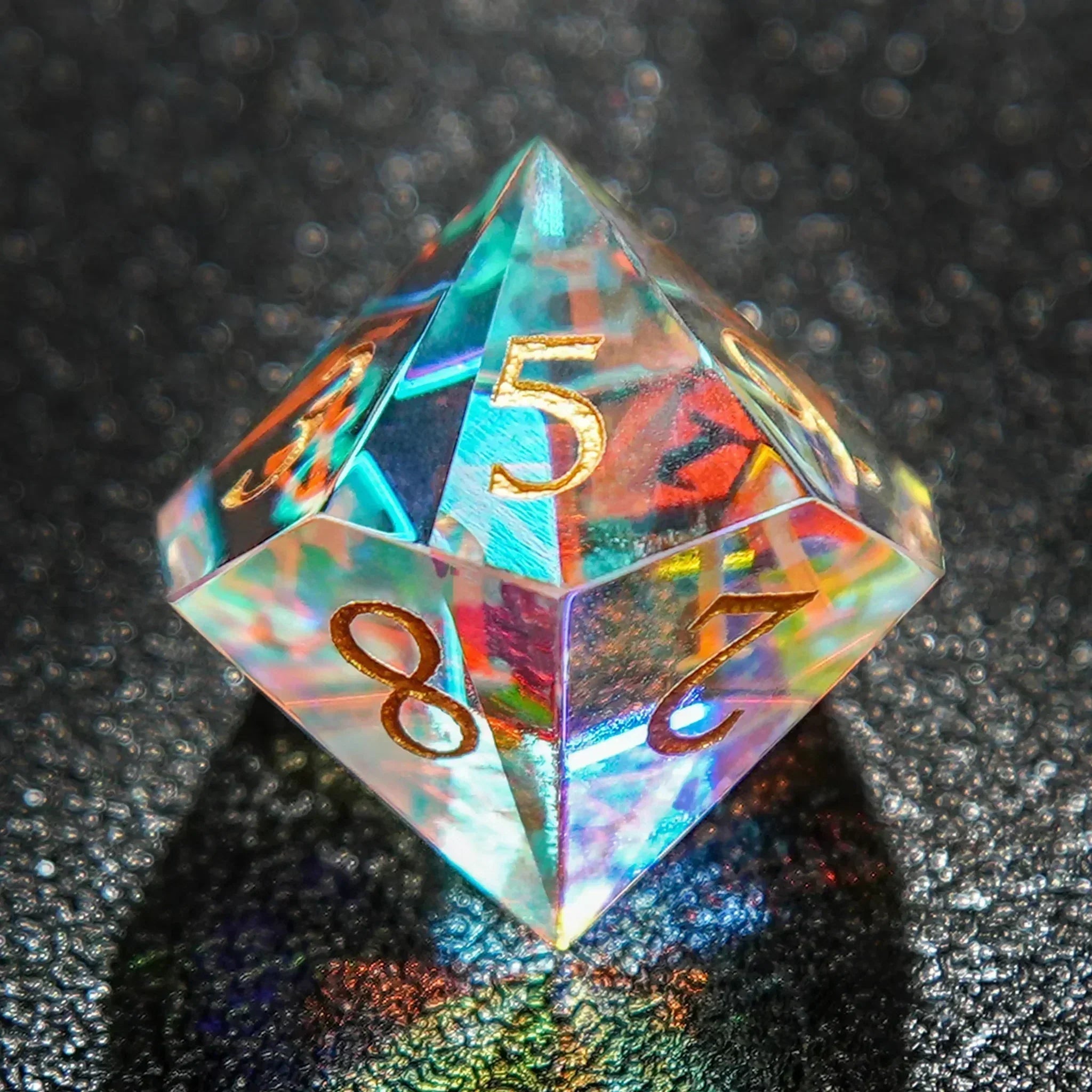In the Dungeons & Dragons (DND) 5e ruleset, the Cleric has always been a very unique class.
Unlike wizards, they rely on learning magic, but rather on faith and the power of the gods to cast divine spells.
A powerful Cleric can not only heal allies and turn undead, but also devastate enemies with divine light.
If you're new to DND and want to understand the 5e Cleric Spells system, this article will walk you through: which spells a Cleric knows, how many spells they can prepare daily, which domain spells (5e Cleric subclasses) are available, and recommended cantrips worth acquiring.
Grab your dice set and get ready to roll with divine brilliance!
1. Who is a Cleric? Are Clerics the Only Healers?
In the world of DND, Clerics are no ordinary magicians or warriors. They are the embodiment of faith, carrying the will of the gods and bringing divine power to the mortal realm. Simply put, they are the voices of the gods.
You can think of a cleric as someone who can wield a hammer or a staff, smashing enemies while also healing allies. They can serve as a tank on the front lines of battle, yet they can also summon divine light to save others in critical moments.
Many new players initially ask, "Is the cleric the only one in the group who can heal?"
The answer is—not entirely, but the cleric is usually the primary source of healing.
While some classes can also heal (such as druids and paladins), clerics possess the most numerous and consistent healing spells.
Clerics also wield a variety of protective and enhancing spells, significantly increasing their teammates' survivability in combat.
Thus, when a group finds a critically injured or dying ally, the cleric is often the key lifesaver. Their presence significantly increases the survival rate of the adventuring party and allows players to experience the powerful feeling of divine blessing in crucial moments.
In short, a cleric is not only the embodiment of faith and strength, but also the indispensable protector and healer of the team. Their weapons and skills allow them to both save lives and perform impressive maneuvers.
2. Do clerics know all spells?
Many new players initially ask, "Do clerics have access to all spells every day?"
The answer is—almost, but with some minor limitations.
In DND 5e, clerics theoretically know all cleric spells (5e).
You don't have to learn spells slowly like a wizard, nor do you have to rummage through scrolls and memorize formulas. As a cleric, you have access to the complete spell list.
However, you can only prepare a certain number of spells each day.
For example, if you prepare three healing spells and two attack spells today, you can switch to protection and crowd control spells tomorrow.
It's like praying at the altar every morning, and the deity grants you only that day's power, allowing you to choose the appropriate spells for the upcoming adventure.
The benefits of this design are:
- Extreme flexibility: You can freely customize your spells based on your team's needs, the adventure environment, or the enemy type.
- Tactical versatility: One day you might be a "healer," saving your teammates from danger; the next day you might be a "divine light sniper," bombarding monsters with holy light.
For example:
If you and your teammates enter a tomb overrun by undead, you might prepare more offensive cleric spells (like Inflict Wounds) to deal with the undead, while also keeping a few healing spells to keep your teammates alive.
If you're just exploring the wilderness, you might prepare more exploration and protection spells, like Detect Magic or Shield of Faith.
In short, a priest's magic is like a customizable spell toolbox: you "know" everything, but you only use the right combination each day. This gives the priest a sense of mystery and practicality in the world of Dungeon Fighter II.
Tip:
If you want to add a touch of ritual to every dice roll, consider pairing it with a beautiful set of resin or metal dice. Each spellcasting will feel like divine intervention! 🎲✨
3. How many spells can a cleric cast at level 1?
A cleric is a powerful spellcaster who draws upon divine power to cast healing, support, or offensive spells. In Dungeons & Dragons, cleric spells are divided into two categories:
- Spell Slots: These represent the number of spells you can cast per day. Each spell slot has a level limit; for example, a 1st-level spell requires a 1st-level slot.
- Cantrips: Zero-level spells that require no slots and can be cast an unlimited number of times.
Examples:
Cure Wounds: Uses a 1st-level spell slot to restore health to an ally.
Bless: Grants combat bonuses to an ally.
Sacred Flame: Deals holy damage to an enemy.
Guidance: Assists allies by adding 1d4 points to skill checks, increasing the chance of success.
Cleric at 1st level:
Spell slots: Two 1st-level spell slots
Number of cantrips available: Three cantrips
You can freely use cantrips in combat. The number of spell slots you have determines how many higher-level spells you can cast, so it's important to allocate your slots wisely.
Cleric Class Spell Slot Table
4. How many spells can a cleric prepare daily?
The number of spells a cleric can prepare daily depends on their cleric level and Wisdom modifier.
Formula:
Number of spells you can prepare daily = Cleric level + Wisdom modifier
These spells can be prepared again after a long rest.
The number of spells you prepare daily determines which spells you can cast in which spell slots, but it does not limit the number of times you can use a spell slot.
Example:
3rd-level cleric, Wis +3
Prepared spells = 3 (cleric level) + 3 (Wis modifier) = 6 spells
You can choose 6 spells from your spell list and cast them daily, as long as you have the corresponding spell slots.
5th-level cleric, Wis +4
Prepared spells = 5 + 4 = 9 spells
You can adjust your spell mix based on the day's tasks, for example, preparing more damage/support spells for combat missions and more reconnaissance/support spells for exploration missions.
Cleric cantrips are zero-level spells, meaning you can cast them infinitely with virtually no spell slot consumption, making them a cleric's most stable and reliable tool. Especially at early levels, choosing the right cantrip can significantly improve combat and exploration efficiency. Here are a few classic and useful cleric cantrips:
1. Guidance
Type: Support
Effect: Grants the target a 1d4 bonus on a skill check.
Use Cases: Very useful in exploration, puzzle-solving, or social situations, such as lockpicking, scouting, and negotiation.
Strategy Tip: It doesn't consume a spell slot. It's best to cast it before teammates make important skill checks to significantly increase your team's success rate.
Tip: Cast Guidance for teammates before combat to ensure the success rate of key actions; or use it frequently during non-combat phases to improve the overall team's performance.
2. Sacred Flame
Type: Attack
Effect: Deals radiant damage to one enemy. The target requires a Dexterity saving throw.
Use Cases: A primary attack damage source, useful against enemies with low defense or for triggering the light-sensitive mechanism of certain enemies.
Strategy Tip: Hits don't require an attack roll (use a saving throw), allowing you to effectively deal damage even with low hit rate.
Tip: When facing groups of enemies or weak targets, Sacred Flame is an excellent choice for saving spell slots, providing stable and safe damage.
3. Thaumaturgy
Type: Non-Combat/Role-Playing
Purpose: Creates a miraculous aura, such as emitting sounds, vibrating doors and windows, or changing eye color, to enhance a priest's presence.
Use: Enhances the atmosphere during exploration, negotiation, intimidation, or role-playing scenarios, and cultivates the priest's sacred aura.
Strategy Tip: While it doesn't directly deal damage, it can indirectly alter the course of battle by intimidating, stunning enemies, or attracting the attention of NPCs.
Tip: Coordinate with teammates to utilize role-playing skills to maximize effectiveness during negotiations or feigning miracles, enhancing the storyline experience.
4. Spare the Dying
Type: Support/First Aid
Purpose: Stabilizes a dying target, instantly restoring 1 health point and stopping the death check.
Use: A lifesaver in combat, especially when a teammate's health is nearing 0, allowing for stability without consuming a spell slot.
Strategy Tip: Prioritizes casting this spell on the team's main tank or key damage-dealing character to ensure sustained combat.
Tip: If you encounter traps or unexpected damage during your adventure, Sparing the Dying saves your team from wasting precious spell slots healing wounds.
Summary: The power of faith comes from choice.
Clerics are more than mere healers; they are the embodiment of the gods, guardians of light and order.
Mastering the right 5e Cleric spells and understanding the differences between 5e Cleric subclasses will allow you to be both a savior and a symbol of faith on the battlefield.
Whether you choose Light, Storm, or Grave, clerics can cast their own miracles.
Grab the dice and pray—the power of the gods is at your fingertips.
✨ Dice Sets to Illuminate Your Priest's Faith
In the world of Dungeon & Dragons, every dice roll is a divine revelation.
If you're planning to play a cleric, visit Bear Dice to select a set of dice with a holy or mystical aura for your character, so that every prayer and every roll will shimmer with the blessing of the gods.


